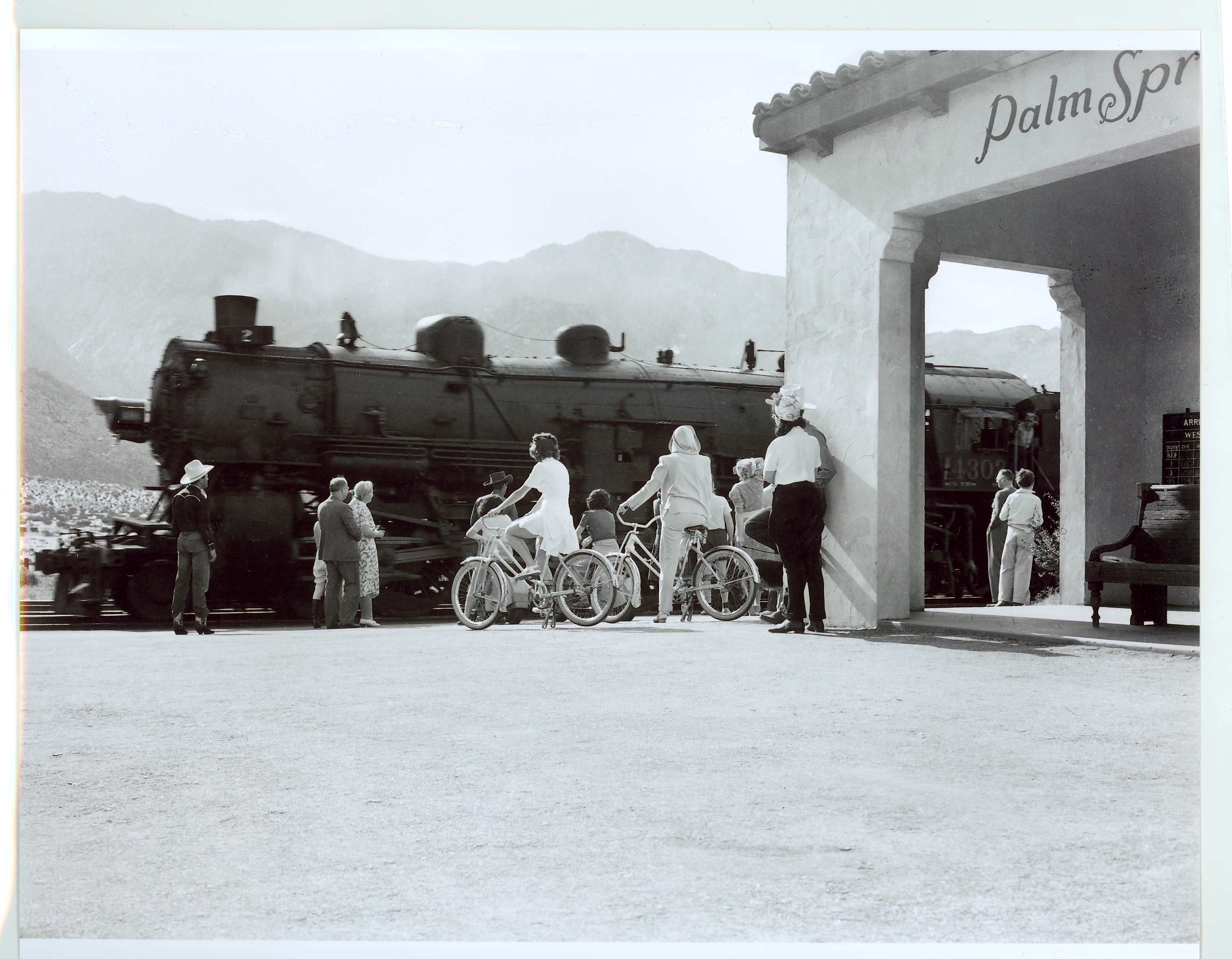National Museum of the American Indian Presents “Section 14: The Other Palm Springs, California”

Credit: Palm Springs train station, 1939. Photographer unknown. Courtesy Palm Springs Historical Society.
Just one block from downtown Palm Springs, California, with its busy restaurants, hotels and shopping district, lies the other Palm Springs—Section 14. It is the square-mile section of land that forms the heart of the Agua Caliente Indian Reservation. Native American tribes, such as the Agua Caliente Band, are sovereign—Native nations, not federal, state or city governments, have the inherent right to govern their people and territories. Over the years, however, corporations, property developers and non-tribal governments have challenged this sovereignty. The Smithsonian’s National Museum of the American Indian presents “Section 14: The Other Palm Springs, California,” an exhibition that tells the story of the Agua Caliente Band of Cahuilla Indian’s work for justice and rights to their land in the popular California resort town.
“Section 14: The Other Palm Springs, California,” which will be open through January 2020, was created by the Agua Caliente Band of Cahuilla Indians and organized by the Agua Caliente Cultural Museum. A press preview with Jeff L. Grubbe, tribal chairman of the Agua Caliente Band of Cahuilla Indians, will take place Wednesday, April 10, from 10 to 11:30 a.m. For more information or to attend, email NMAIPressOffice@si.edu.
“As a Smithsonian museum committed to equity for Native peoples, our museum sometimes presents exhibitions created by the Indian Nations themselves,” said Kevin Gover (Pawnee), director of the National Museum of the American Indian. “On this occasion, we are showcasing ‘Section 14: The Other Palm Springs, California’ from the Agua Caliente Band of Cahuilla Indians. The exhibition exposes a compelling story in the battle for tribal rights, exemplifying the long and ongoing conflict in the West between non-Indian economic ambitions and the rights and authorities of the Indian Nations.”
During and after World War II, Palm Springs’ military base and booming tourist industry drew minority workers and low-income families to the area. These new residents found work in hotels, restaurants and other businesses, but city property owners discriminated against them by inflating the price of housing. Section 14 became home to diverse cultures, races and ethnicities as individual tribal members began leasing their lands. At the same time, the City of Palm Springs wanted control over Section 14’s hot mineral spring and valuable property located so close to downtown. When city leaders could not acquire the land outright, they attempted to restrict building, zoning and leasing on reservation lands, then declared the housing there substandard.
Using photographs, oversized maps, newspaper clippings and quotes from tribal members, council leaders and government officials, “Section 14: The Other Palm Springs, California” chronicles the life experiences of the people who lived on this historic tract, especially during the pivotal decades from the 1940s through 1960s. Organized by five themes, the panel exhibition highlights sovereignty and how the Agua Caliente Reservation came into existence. The narrative documents life on Section 14 and the community that was destroyed when residents were displaced from their homes. The exhibition examines the causes of the destruction and the competing interests responsible for it, and it ends with how tribal members are now developing their ancestral lands and reviving Section 14.
“Section 14: The Other Palm Springs, California” highlights the challenging and evolving relationship between the Agua Caliente Tribe and the city of Palm Springs. Since 1977, the Agua Caliente and the city have had a land-use contract in which the tribe administers its own lands, and the tribal and municipal governments work together for the mutual benefit of their citizens.
About the Museum
The National Museum of the American Indian is committed to advancing knowledge and understanding of the Native cultures of the Western Hemisphere—past, present and future—through partnership with Native people and others. National Mall at Fourth Street and Independence Avenue S.W.; open every day from 10 a.m. to 5:30 p.m. (closed Dec. 25); Facebook, Twitter, Instagram and AmericanIndian.si.edu.
About Agua Caliente Museum
The new Agua Caliente Cultural Museum is under construction and set to open in 2020. The new museum, designed by JCJ Architecture, will be located at the corner of E. Tahquitz Canyon Way and S. Indian Canyon Drive in downtown Palm Springs. The new museum is intended as a home to celebrate the history, culture and modern times of the Agua Caliente Band of Cahuilla Indians. Inspiration for the museum’s design includes Agua Caliente traditions such as basket weaving and pottery (ollas) and elements found among the natural desert landscape. The design reflects the Tribe’s values and ongoing commitment to the Agua Caliente people.
The public can join the conversation on social media using the hashtag #Section14atNMAI.
# # #
SI-655-2018
Marielba Alvarez
202-633-6888
alvarezma@si.edu
Becky Haberacker
202-633-5183
haberackerb@si.edu
This release was originally posted Dec. 13, 2018
